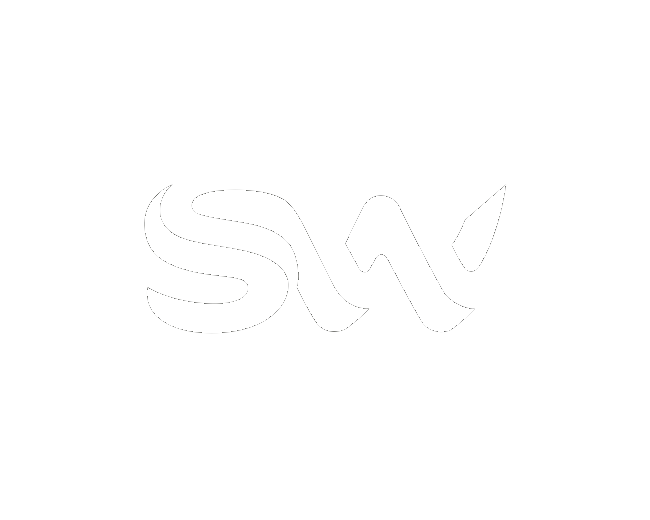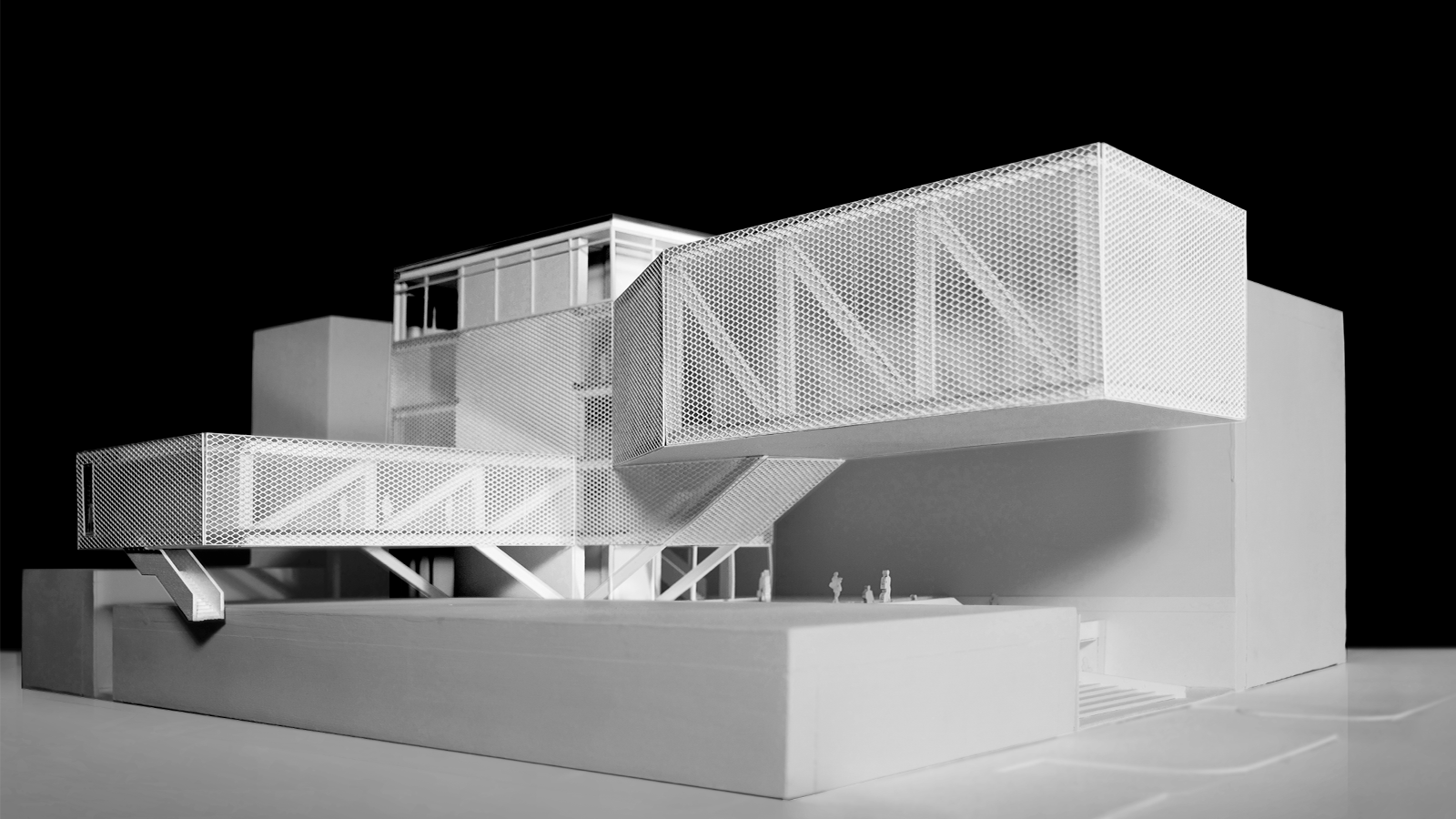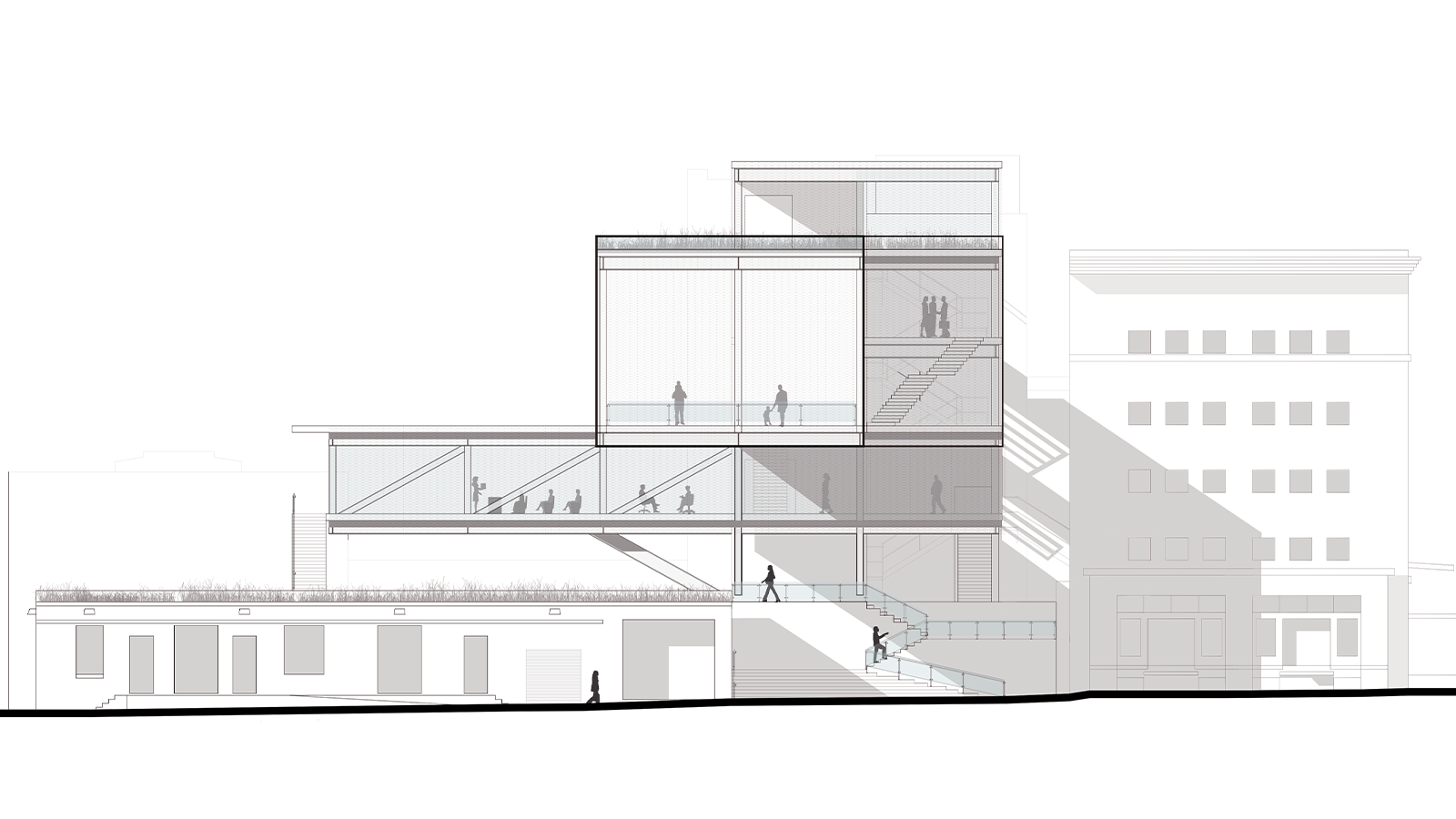项目状态 STATUS
Architecture Studio Project
指导老师 INSTRUCTOR
David Karle, Associate Professor of Architecture
设计团队 DESIGN TEAM
夏炜 XIA Wei, 吴俊星 WU junxing
在当前的城市化进程中,如何将新建筑物融入现有的城市环境中是本项目的主题。特别是在城市无法在高密度区域提供充足的土地时,利用限制因素来构建建筑群体的反向思维可以成为解决土地稀缺问题的一种方案。这个解决方案提供了既保留公共空间又保持建筑功能的可能性。
During the current urbanization, how to combine new buildings into existing urban conditions is the theme of this project. Especially when the city cannot offer a generous site in a high-density zone, the inverse thinking of using limiting factors to frame architecture massing can be a solution of land scarcity. This solution provides a possibility of remaining both public space and architecture function.
"Negative Form"是一个研究实验室和濒危植物保护设施。作为一个多功能建筑,它为公众和内布拉斯加大学林肯分校提供服务。为了获得而作出牺牲是将新实验室融入其环境的主要策略。例如,新实验室在东侧建筑之间保持必要的间距,并通过半透明网状立面将其隔开;它将访客入口设在二楼,与西侧邻居一起创造绿色屋顶。这一策略打破了城市法规和产权的限制,并重新获得了整个城市的关键问题。
The Negative Form is a research laboratory and facility for saving plant species that facing the threat of extinction. As a multi-functional building, it serves both the public and the University of Nebraska-Lincoln. Sacrifice for gain is the main strategy to merge the new laboratory into its context. For example, the new laboratory keeps a necessary gap between the east building and divides it with a translucent mesh facade; It locates the visitor entrance on the second floor to create a green roof with the west neighbor. The strategy breaks the limits of urban code and property ownership and wins back a critical question of the city as a whole product.
NEGATIVE FORM
2014, LINCOLN, USA




